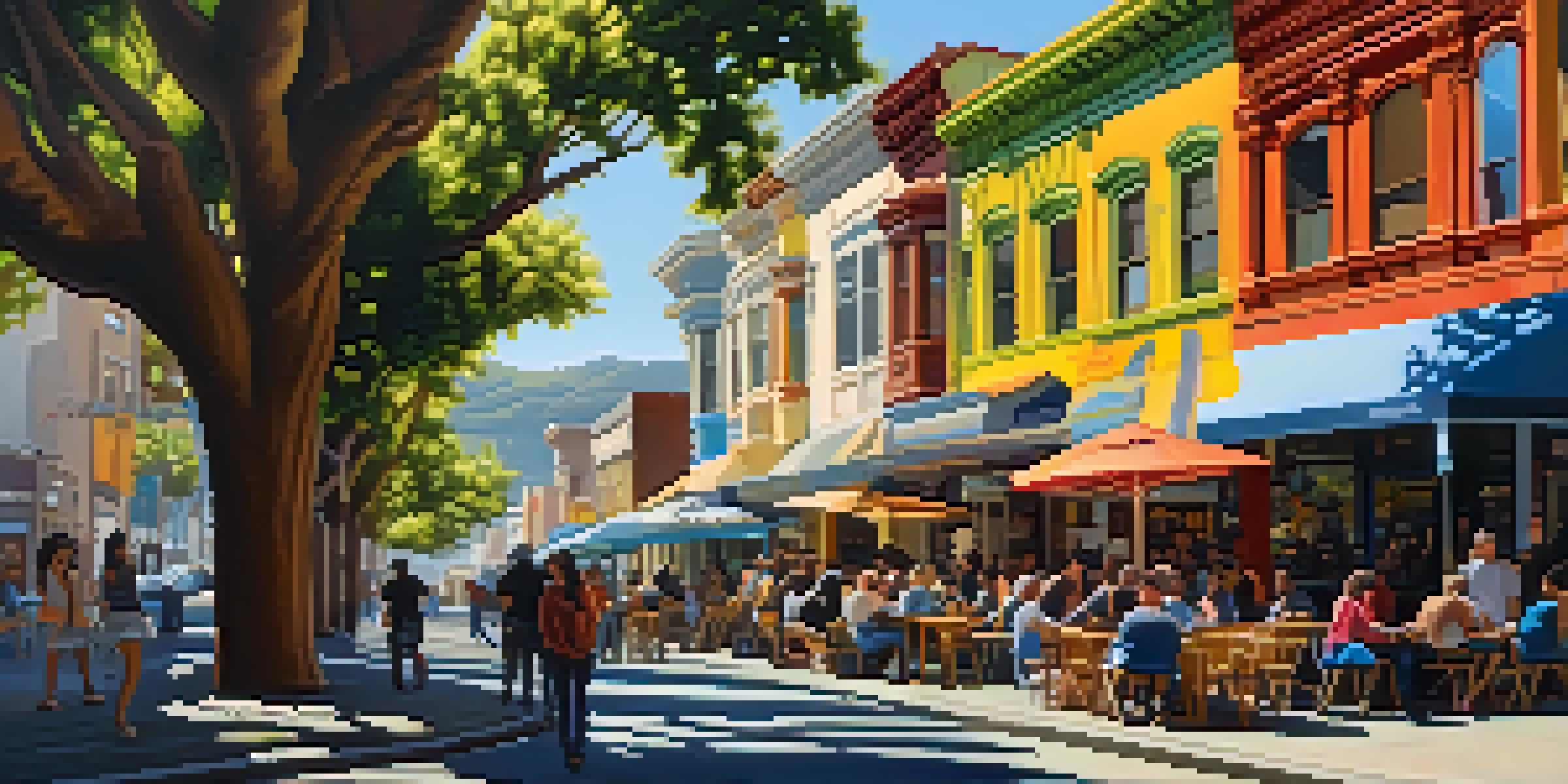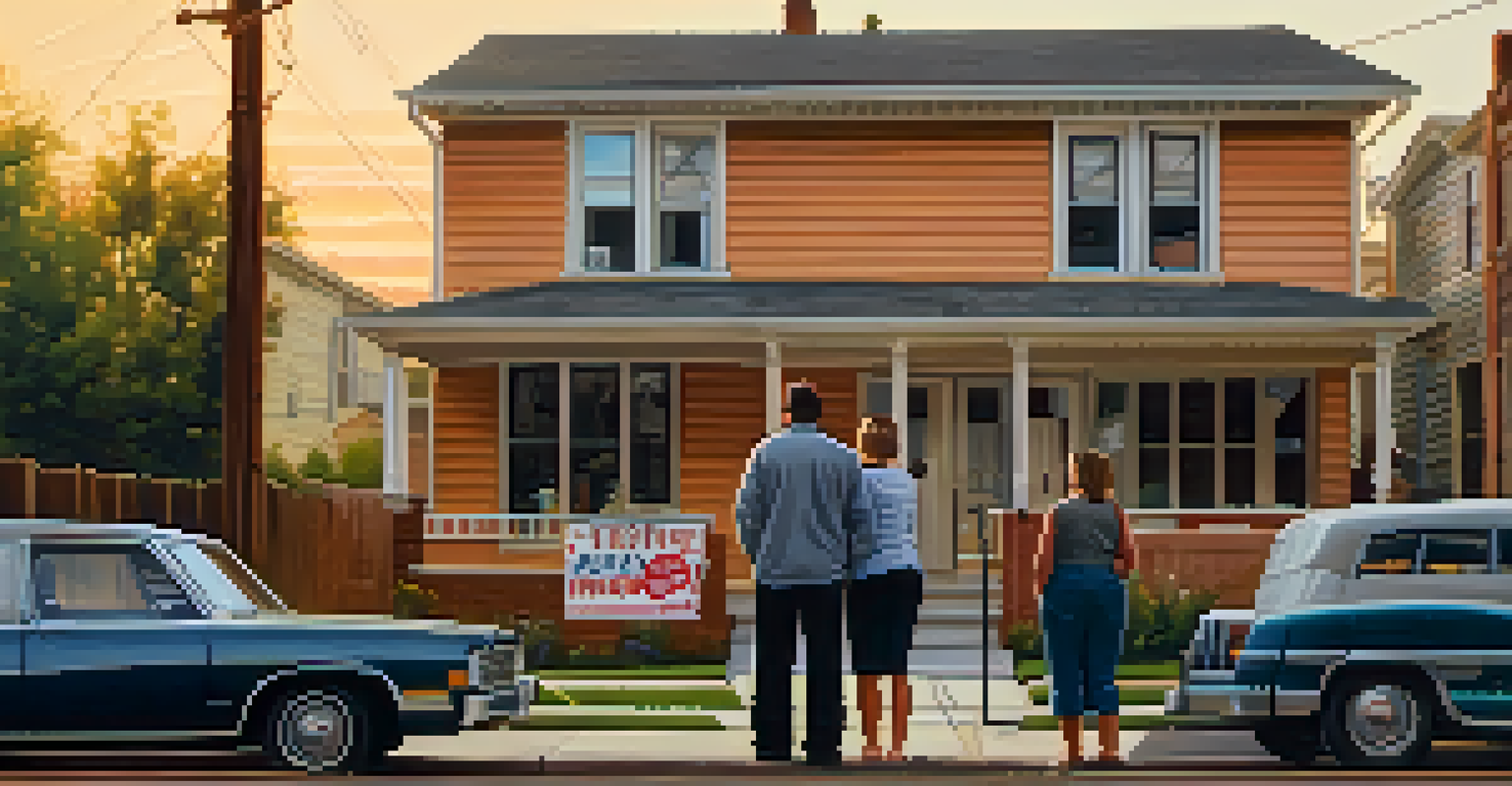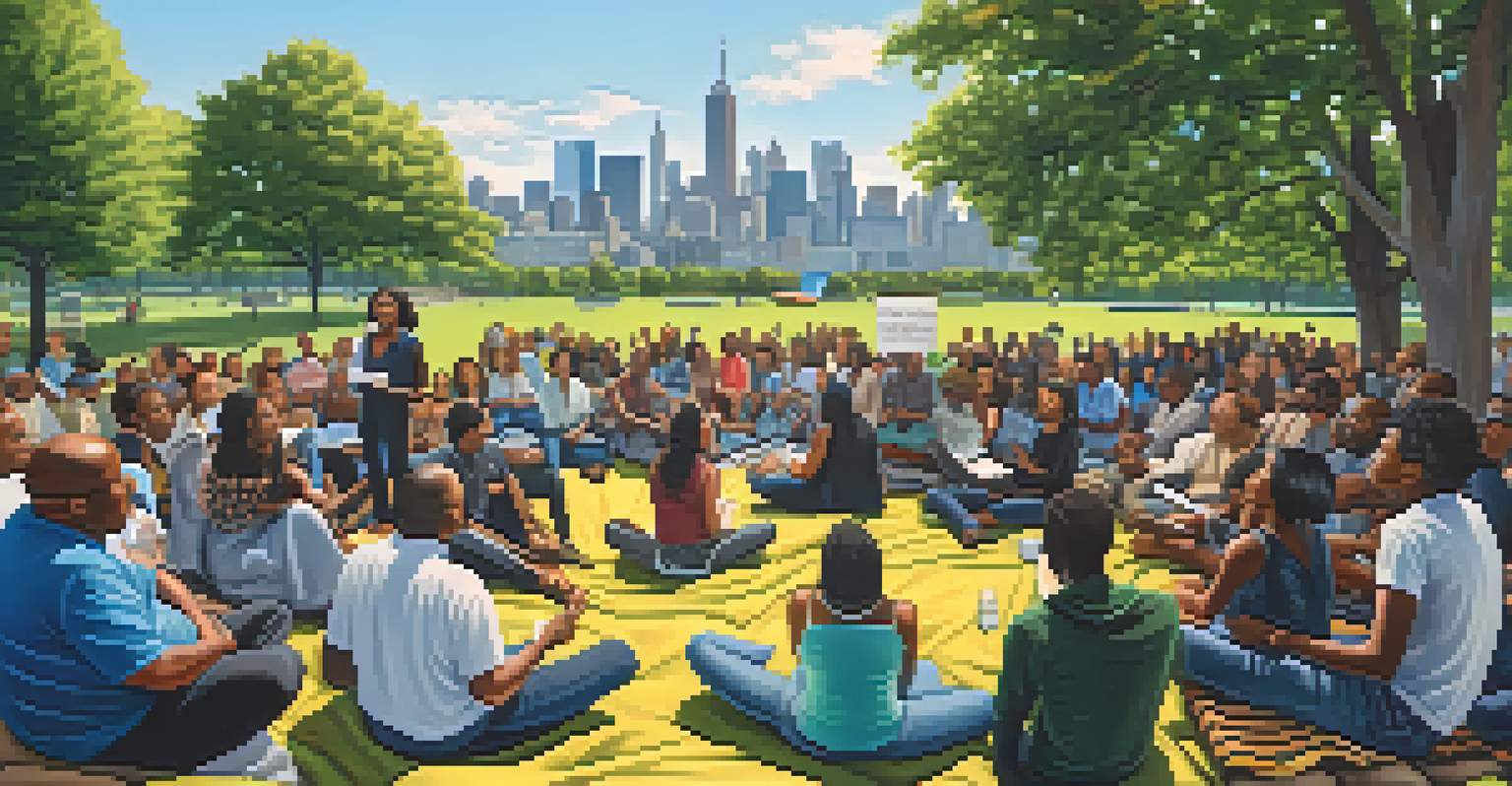The Gentrification Debate in San Francisco's Urban Areas

Understanding Gentrification: A Double-Edged Sword
Gentrification is a term that often sparks heated discussions, particularly in urban settings like San Francisco. At its core, it refers to the transformation of neighborhoods through influxes of wealthier residents, often leading to rising property values and rents. While this can lead to revitalized areas with improved amenities, it also raises concerns about displacement of long-time residents who can no longer afford to live in their homes.
Gentrification is a form of urban renewal that restores neighborhoods but often at the expense of existing residents.
Think of gentrification like a new paint job on an old house. While the fresh look can attract more visitors and businesses, it often comes at the cost of the original character and community spirit. In San Francisco, neighborhoods like the Mission District are experiencing these changes firsthand, sparking debates about who truly benefits from such developments.
Understanding this duality is crucial as we navigate the complexities of urban growth. The challenge lies in finding a balance between economic development and preserving the unique identities of neighborhoods, an issue that continues to be hotly debated in city council meetings and community forums.
The Historical Context of Gentrification in San Francisco
To grasp the present state of gentrification in San Francisco, it helps to look back at its history. The city has always been a melting pot, attracting waves of immigrants and new residents drawn by the promise of opportunity. However, the tech boom of the early 2000s marked a significant turning point, bringing an influx of wealth that began to reshape the urban landscape dramatically.

With tech companies setting up shop and attracting talent from around the globe, neighborhoods like SoMa and the Tenderloin saw rapid transformations. Old warehouses turned into luxury lofts, and local businesses struggled to keep pace with the rising costs. This historical perspective reveals how economic shifts can drastically alter community dynamics, often leaving long-time residents feeling marginalized.
Gentrification's Mixed Blessings
While gentrification can revitalize neighborhoods, it often leads to the displacement of long-time residents.
As we reflect on this history, it's clear that gentrification is not a new phenomenon in San Francisco. Yet, the speed and scale at which it is occurring today raise critical questions about equity, access, and the future of the city's diverse neighborhoods.
The Impact of Rising Housing Costs on Communities
One of the most immediate effects of gentrification is the steep rise in housing costs, which can be devastating for existing residents. As property values increase, landlords may choose to renovate and increase rents, pushing out tenants who have lived in the area for years. This situation creates a ripple effect, where families are forced to move further away from their jobs, schools, and communities.
The challenge of gentrification is to balance the needs of new and existing residents, ensuring that community identity is preserved.
Imagine a family that has lived in the same neighborhood for generations suddenly facing eviction due to skyrocketing rent. Their ties to the community, from friends to local services, are severed, leading to a loss of social cohesion. This scenario is becoming increasingly common in San Francisco, where the cost of living is among the highest in the nation.
The emotional toll of displacement cannot be understated. Communities lose their cultural fabric and history, and new residents may not fully appreciate or understand the stories that once defined these neighborhoods, leading to a homogenized urban landscape devoid of its unique character.
Voices of Resistance: Community Activism in Action
In response to the challenges posed by gentrification, many community organizations and activists have emerged to advocate for the rights of long-time residents. These groups work tirelessly to raise awareness of the impacts of displacement and push for policies that protect affordable housing. Their efforts often include organizing protests, hosting community meetings, and working with local government to influence policy changes.
For example, organizations like the Mission Economic Development Agency (MEDA) focus on providing resources for families facing eviction while advocating for stronger tenant protections. Their grassroots approach empowers residents to voice their concerns and fight for their rights, showcasing the resilience of communities in the face of adversity.
Community Activism Against Displacement
Grassroots organizations are actively advocating for the rights of residents affected by rising housing costs.
These collective efforts highlight the importance of community engagement in shaping urban development. By uniting voices, residents can not only resist negative impacts but also influence the direction of their neighborhoods, ensuring that they remain vibrant and inclusive places for all.
The Role of Local Government in Mitigating Gentrification
Local government plays a crucial role in addressing the challenges posed by gentrification. Policymakers are tasked with creating frameworks that encourage economic development while also protecting vulnerable populations. This balancing act often involves implementing policies such as rent control, affordable housing mandates, and community land trusts.
For instance, San Francisco has introduced various measures to support affordable housing initiatives, but the effectiveness of these policies is frequently debated. Some argue that these measures have not kept pace with the rapid gentrification process, leaving many residents vulnerable to displacement. This ongoing tension between development interests and community needs highlights the complexity of urban policy-making.
As residents advocate for more inclusive policies, the role of local government becomes increasingly important. Collaborative efforts between officials and community members can pave the way for innovative solutions that address the diverse needs of San Francisco's residents, fostering an environment where everyone can thrive.
The Future of San Francisco's Neighborhoods: A Balancing Act
As the debate over gentrification continues, the future of San Francisco's neighborhoods hangs in the balance. With ongoing economic pressures and a growing population, finding a sustainable model for urban development is essential. This means prioritizing not just growth, but also the well-being of all residents, ensuring that everyone has a place in the city.
Consider the idea of mixed-income communities, where diverse socioeconomic groups coexist and thrive together. This vision can help prevent the stark divides often seen in gentrified areas, promoting inclusivity and fostering a sense of belonging. However, achieving this requires commitment and collaboration from all stakeholders, including residents, businesses, and government.
Balancing Growth and Identity
The future of San Francisco hinges on finding a sustainable model that supports economic development while preserving community identity.
Ultimately, the future of San Francisco's urban areas will depend on our collective willingness to engage in meaningful conversations about gentrification. By prioritizing community input and advocating for policies that support diversity and affordability, we can work towards a city that honors its rich history while welcoming new residents.
Concluding Thoughts: Embracing Change While Preserving Identity
Navigating the complexities of gentrification is no small feat, especially in a city as vibrant and diverse as San Francisco. As we embrace the changes that come with urban development, it’s essential to prioritize the preservation of community identity and history. Finding this balance is key to ensuring that future generations can enjoy the rich cultural tapestry that has long defined the city.
It’s a bit like tending a garden: new plants can bring beauty and growth, but if we’re not careful, we risk sacrificing the existing flora that gives the garden its unique character. By nurturing both new and old, we can create a thriving urban landscape that reflects the values of inclusivity, diversity, and respect for all.

In the end, engaging in the gentrification debate is about more than just property values; it’s about people, their stories, and their right to call a place home. As San Francisco continues to evolve, let’s commit to fostering a community that honors its past while looking forward to a more equitable future.